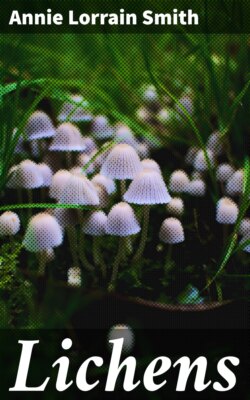Читать книгу Lichens - Annie Lorrain Smith - Страница 26
На сайте Литреса книга снята с продажи.
H. Hymenial Gonidia
ОглавлениеReference has already been made to the minute green cells which were originally described by Nylander[200] as occurring in the perithecia of a few Pyrenolichens as free gonidia, i.e. unentangled with lichen hyphae. Fuisting[201] found them in the perithecium of Polyblastia (Staurothele) catalepta at a very early stage of its development when the perithecial tissues were newly differentiated from those of the surrounding thallus. The gonidia enclosed in the perithecium differed in no wise from those of the thallus: they had become mechanically enclosed in the new tissue; and while those in the outer compact layers died off, those in the centre of the structure, where a hollow space arises, were subject to very active division, becoming smaller in the process and finally filling the cavity. Winter’s[202] researches on similar lichens confirmed Fuisting’s conclusions: he described them as similar to the thalline gonidia but lighter in colour and of smaller size, measuring frequently only 2·3 µ in diameter, though this size increased to about 7 µ when cultivated outside the perithecium.
Stahl[203] sufficiently demonstrated the importance of these gonidia in supplying the germinating spores with the necessary algae. They come to lie in vertical rows between the asci and, owing to pressure, assume an elongate form[204] (Figs. 5 and 6). They have been seen in very few lichens, in Endocarpon and Staurothele, both rather small genera of Pyrenolichens, and, so far as is known, in two Discolichens, Lecidea phylliscocarpa and L. phyllocaris, the latter recorded from Brazil by Wainio[205], and, on account of the inclusion of gonidia in the hymenium, placed by him in a section, Gonothecium.
